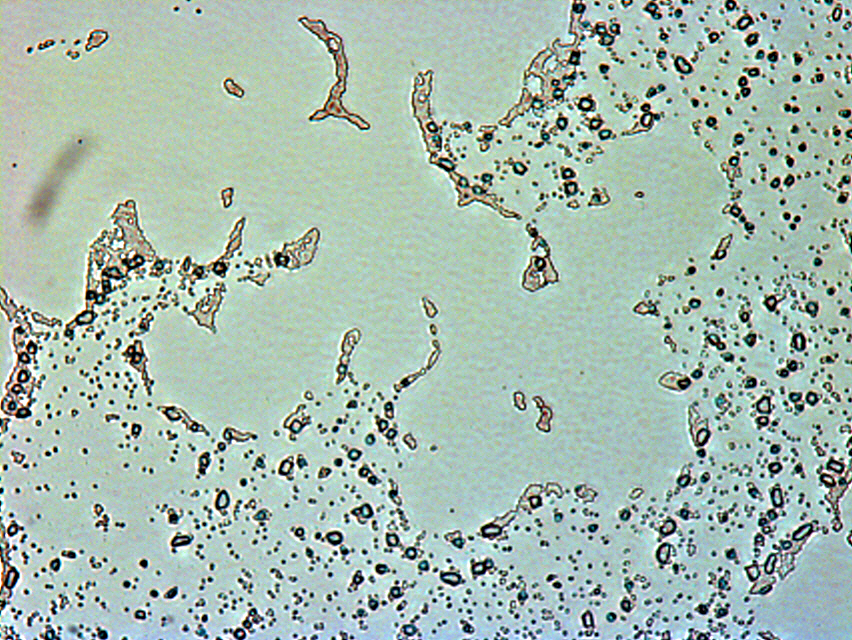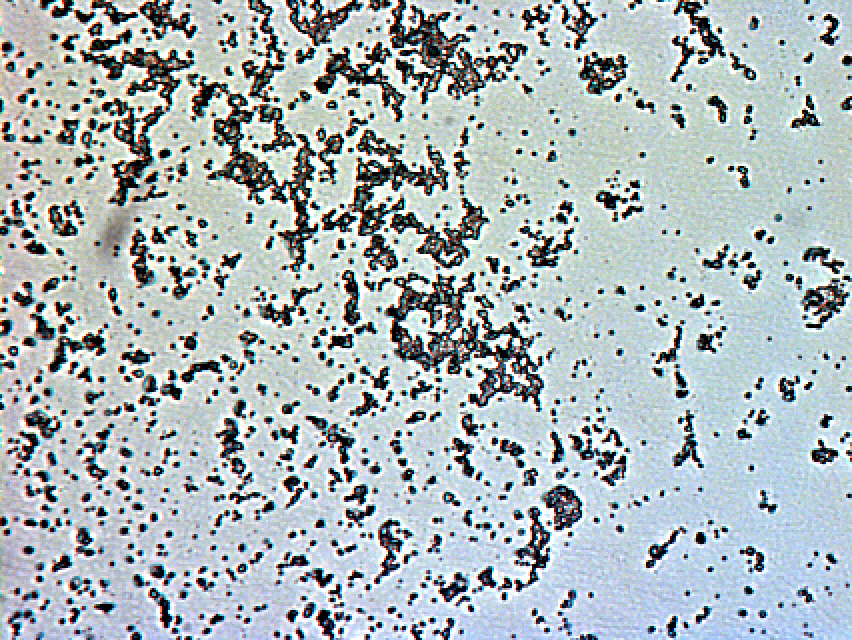Team:British Columbia/Project Biofilm
From 2010.igem.org
| Line 10: | Line 10: | ||
<br/> | <br/> | ||
<h3>Approach</h3> | <h3>Approach</h3> | ||
| - | <p>The biofilm | + | <p>The biofilm sub-team obtained the majority of their results from optical density readings (OD absorbance at 550nm) by a Tecan plate reader. Differing variables were tested initially, which determined that both RN4220 and 8325-4 strains displayed greater growth (higher OD readings) when innoculated into a 96-well flat bottomed plate with a solution of 1%-glucose tryptic soy broth. (see Fig.1)</p> |
<p>After these conditions for growth were established, the innoculated 96-well flat bottomed plates were incubated at various times ranging from 3 to 30 hours at 37 degrees Celsius. After incubation, the innoculated wells were subjected to a 3 x 300ul wash with phosphate buffer saline solution to maintain a stable pH and rinse away cells that were not adhered to the biofilm aggregate. Heat fixation followed to adhere the biofilm to the 96-well plate and inhibit further growth. Subsequent staining of the cells with crystal violet dye allowed for OD readings of the biofilm which produced data for the growth curve.</p> | <p>After these conditions for growth were established, the innoculated 96-well flat bottomed plates were incubated at various times ranging from 3 to 30 hours at 37 degrees Celsius. After incubation, the innoculated wells were subjected to a 3 x 300ul wash with phosphate buffer saline solution to maintain a stable pH and rinse away cells that were not adhered to the biofilm aggregate. Heat fixation followed to adhere the biofilm to the 96-well plate and inhibit further growth. Subsequent staining of the cells with crystal violet dye allowed for OD readings of the biofilm which produced data for the growth curve.</p> | ||
<br></br><center><img src="https://static.igem.org/mediawiki/2010/b/be/Ubcbiofilmschema.jpg"></src></center> | <br></br><center><img src="https://static.igem.org/mediawiki/2010/b/be/Ubcbiofilmschema.jpg"></src></center> | ||
| Line 24: | Line 24: | ||
<div id="news" style="height:2000px;"> | <div id="news" style="height:2000px;"> | ||
<br/><center><h3>Microscopy Biofilm Images</h3> | <br/><center><h3>Microscopy Biofilm Images</h3> | ||
| - | + | Click to see larger image<br/> | |
<a href="https://static.igem.org/mediawiki/2010/6/6a/24D5%282%29.jpg"><img src="https://static.igem.org/mediawiki/2010/6/6a/24D5%282%29.jpg" width=250px></a> | <a href="https://static.igem.org/mediawiki/2010/6/6a/24D5%282%29.jpg"><img src="https://static.igem.org/mediawiki/2010/6/6a/24D5%282%29.jpg" width=250px></a> | ||
<br></br><a href="https://static.igem.org/mediawiki/2010/8/81/Ubiofilm.jpg"><img src="https://static.igem.org/mediawiki/2010/8/81/Ubiofilm.jpg" width=250px></a> | <br></br><a href="https://static.igem.org/mediawiki/2010/8/81/Ubiofilm.jpg"><img src="https://static.igem.org/mediawiki/2010/8/81/Ubiofilm.jpg" width=250px></a> | ||
Revision as of 15:08, 25 October 2010
Introduction
The biofilm sub-team has obtained a growth curve plotting the biofilm growth of S. aureus RN4220 and 8325-4 strains at 3 to 30 hour incubation times. This basic growth curve can be used for comparison with growth curves under conditions where the biofilm is exposed to DspB only, the phage only, or DspB integrated into the phage. RN4220 is a S. aureus strain without a prophage and 8325-4 is a S. aureus strain that has been cured of phage Փ11, Փ12, and Փ13; both strains were selected based on their susceptibility to phage Փ13. The biofilm data collected has additionally been incorporated into the Modelling sub-team simulation to predict the effect of the synthetic phage on Staphylococcus aureus biofilm growth.
Approach
The biofilm sub-team obtained the majority of their results from optical density readings (OD absorbance at 550nm) by a Tecan plate reader. Differing variables were tested initially, which determined that both RN4220 and 8325-4 strains displayed greater growth (higher OD readings) when innoculated into a 96-well flat bottomed plate with a solution of 1%-glucose tryptic soy broth. (see Fig.1)
After these conditions for growth were established, the innoculated 96-well flat bottomed plates were incubated at various times ranging from 3 to 30 hours at 37 degrees Celsius. After incubation, the innoculated wells were subjected to a 3 x 300ul wash with phosphate buffer saline solution to maintain a stable pH and rinse away cells that were not adhered to the biofilm aggregate. Heat fixation followed to adhere the biofilm to the 96-well plate and inhibit further growth. Subsequent staining of the cells with crystal violet dye allowed for OD readings of the biofilm which produced data for the growth curve.

Results & Discussion

 "
"


